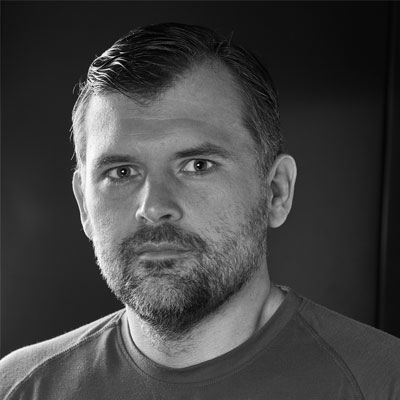
The two most important dates on the DT CulturalHeritage calendar every year are our East Coast and West Coast Round Tables, where we bring together leaders in the Cultural Heritage community to share some of their stories and wisdom, and give the greater CH community the opportunity to connect, mingle, and discuss the latest industry events and technology.
The 2019 West Coast Round Table will be held March 20th at The University of California Berkeley in room 180 at the Charles Franklin Doe Memorial Library from 8:00am to 6:00pm. Please note that the library does not allow entry with outside food or drink. Breakfast and lunch will be provided in the meeting room where the event will be held. Parking permits can be purchased for visitors and you can access information regarding on-campus parking lots and fees here. Useful tips and information regarding campus parking and off-campus parking lots here.
This Year’s Speakers & Topics:

Digitizing the Carl Van Vechten Slides: The Complete Story
Eric Shows, New York Public Library
Using the Carl Van Vechten Slides digitization project as an example, I will share the complete lifecycle of a digitization project at the New York Public Library starting with project initiation, prioritization, and preparation across various departments before arriving at our studio. Along the way, I will discuss the judgement calls made by curators, how descriptions are enhanced before being entered in to our metadata system, and how we leveraged a public order to digitize an entire collection. I will also tell the story of limited capacity and a generous offer from Digital Transitions to test and borrow a workstation, why the DT Atom or a transmissive media kit was absolutely necessary to complete the project on time, and what we learned about digitizing color positive slides over the course of the project. As part of the walkthrough, I will share a behind-the-scenes view into our workflow tools, shared artifact checklists, home-built metadata system, QC checklists, and a few scripts that help us do it all efficiently. I will also briefly discuss copyright and publishing our files to the web, how files are stored long-term, and how the Carl Van Vechten Slides made their debut at the Whitney Museum.

Decay and Safety in the Digital Capture of Film-based Photographic Collections
Gawain Weaver, Gawain Weaver Conservation
Gawain will present a broad overview of film-based negative deterioration commonly found in archival collections. He will discuss the hazards of deteriorating negatives, which negatives can be safely digitized in-house, and steps that can be taken to do so while safeguarding both film collections and the health of digitization staff. Using examples from his own work, he will discuss the advantages of the Digital Transitions film scanning tools in safely capturing high-quality images from deteriorated originals. And finally, he will discuss the deterioration issues that require cleaning or conservation treatment that might be more safely handled by contracting out to conservators specializing in film-based photographic collections.


The Fine Art of Documentation: Rethinking Object Photography of Cultural Heritage
Tahnee Cracchiola, J. Paul Getty Museum
Kevin Candland, Asian Art Museum
“The greatest art in the world is the art of storytelling.” – Cecil B. DeMille
Every object has a story. It is our role as the museum photographer to tell that story visually using light and shadow as our medium. We present a case study on bringing the elements of fine art lighting into the cultural heritage studio and the collaborative interaction between photographer and curator. The fusion of the expertise and vision of both departments is the catalyst that can open the storytelling dialogue by creating dynamic images that are used across departments throughout the museum from the scholar to the gift shop. To this goal, we open the discussion of the benefits of inviting your curator on set before photography begins as the foundation of photographing three-dimensional objects in the cultural heritage arena. These diverse objects, from bronze to chalcedony, from silver to terracotta demand attention beyond balanced light and shooting targets. This investigation into the collegial exercise of museum photographers and curators combining expertise may be the key to unlock how we light and frame an object in the studio and on display.

Digitizing the Glass Negatives of the Panama Pacific International Exposition
Christine Huhn, University of California Berkeley Libraries
Our imaging team digitized over 2,500 glass negatives ranging from 4×5” to 12×20” documenting the 1915 World’s Fair, also known as the Panama Pacific International Exposition (PPIE). I will discuss the workflow and process of the digitization project including the difficulty digitizing broken and oversize glass negatives.

National Portrait Gallery – Mathew Brady Civil War Glass Plate Collection
Eric Philcox, DT Heritage
We had the honor and privilege to work with the National Portrait Gallery to digitize much of its collection including the Mathew Brady Civil War glass plate collection. Due to the significance and size of this collection, there were very strict handling and imaging requirements that made digitizing this collection very challenging. I will be detailing our physical and virtual workflows for this project as well as a large-scale effort to digitize the National History Museum’s collection of southern pacific invertebrates from its paleo collection. The paleo collection offered some unique challenges for mass digitization that required using some familiar tools in different ways from their intended purpose.

The DT Digitization Guide for Film & Other Transmissive Materials
Doug Peterson, Digital Transitions
Doug Peterson, our Head of R+D, will be presenting on the DT Digitization Guide for Transmissive Materials, a 70-page document that covers both the theory and practice of the digitization of film and other transmissive materials. He’ll be very eager for feedback on this document, as well as for sample materials to include as a digital companion.
